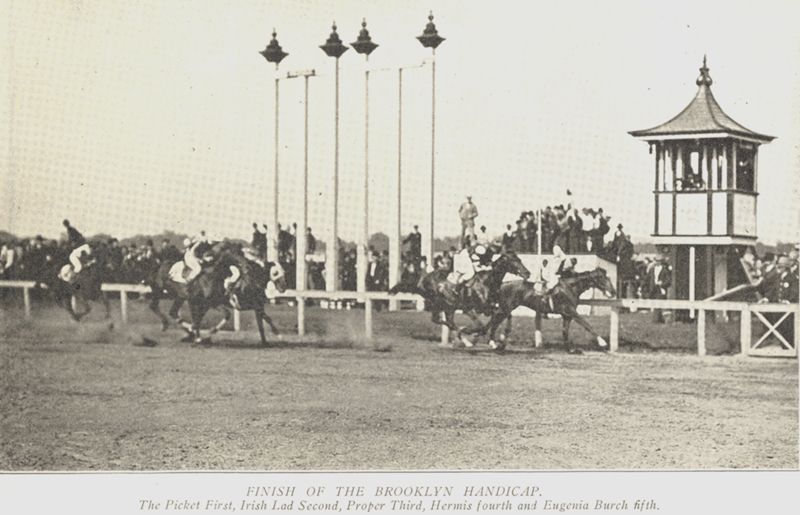Southern Brooklyn Was The Mecca Of Horse Racing During The Late 1800s

Coney Island, Manhattan Beach and Brighton Beach weren’t the only areas where the rich spent their leisure time in the late 1800s and early 1900s. During that time horse racing tracks were built in Sheepshead Bay, Gravesend and Brighton Beach, where the events were often packed with a “fashionable throng.” [pdf]
Looking through old New York Times articles, it becomes clear that the horse racing tracks in these areas drew the attention of much of the city and world, and the Times began reporting on it regularly. The tracks even brought Thomas Edison with his new gadget, the camera, to the Sheepshead Bay horse track in 1897.
While the horse tracks in these areas gained so much attention and dominated the neighborhoods there are few traces today on places like Ocean Avenue of the Sheepshead Bay track.
By 1915, the track in Sheepshead Bay had been converted into an automobile race track and soon after that the track became “doomed by the march of development and the demand for home sites,” according to a New York Times article from 1923. The end of the horse track era ended just as quickly as it began.
The change from sporting scenes to residential districts has happened in a very short time. It is a matter of only twelve or thirteen years ago that throngs of thirty, forty and fifty thousand people headed, day after day, to such well-known enclosures as the Sheepshead Bay race track, Gravesend and the parkway driving tracks.
The prohibition of gambling that went into effect around that time also helped kill the industry, as we wrote before in a post about the area’s history.
Even though the horse tracks were replaced with houses, the neighborhoods were never the same. Before the racing, Sheepshead Bay and the other areas were just small coastal towns where the middle and working class lived. With all of the money and attention the tracks brought, Southern Brooklyn would never be the same as more people began to move into the area.
“Today the sites of these same race tracks provide homes for just as many people,” from the same 1923 Times article.



